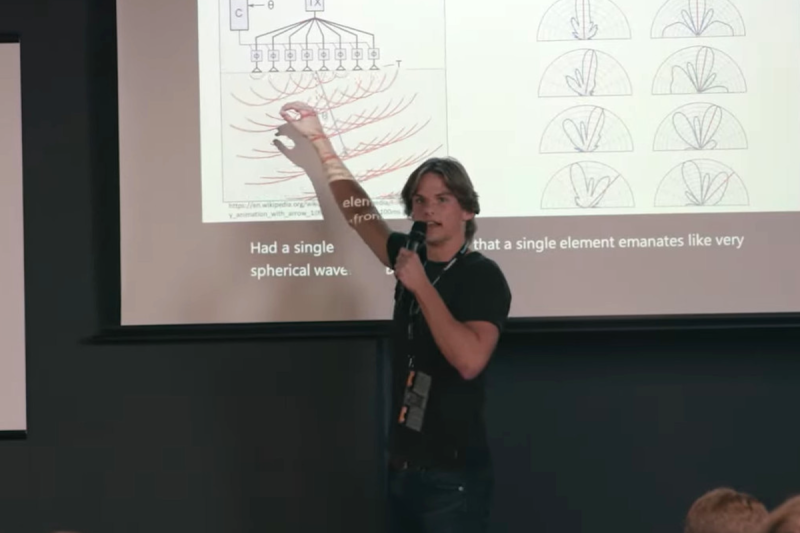Detecting objects underwater isn’t an easy challenge, especially when things get murky and dark. Radio waves don’t propagate well, so most techniques rely on sound. Sonar is itself farily simple, simply send out a ping and listen for an echo, and that will tell you how far something is. Imaging underwater is significantly harder, because you would additionally need to know where each echo is coming from.
To answer the question of whether it is possible to put together an ultrasonic 3D imager that would cheaply enable anyone to image objects underwater, [Alec Vercruysse] and fellow team members at the Harvey Mudd College set out to create a system that does exactly that. You can read the presentation slides (PDF) or check out the entire project in the GitHub repository.
The design as presented by [Alec] uses a three by three grid of piezoelectric (PZT) transducers, which unlike other designs uses the same transducers both for transmitting the signal and receiving the response. One snag here was that the PZT material does not have the same specific acoustic impedance as water, requiring an interface layer to be added to overcome this. Fortunately a thin coating of clear silicone was sufficient as interface material, without apparently significantly affecting the effectiveness of the transducers as a speaker or microphone. As a bonus, this silicone coating also helps to waterproof the transducers and the wiring connected to them, which is another issue that crops up when designing electronics for use underwater.
Instead of using separated transmitters and receivers, [Alec]’s system connected each of the nine transducers to a TX/RX switch, that enables each transducer to be first used as a transmitter, after which it is switched over to the RX path, which connects the transducer to the ADC of the onboard MCU. For testing, the RX circuit starts off with a 60 Hz filter to reject line noise from North American 60 Hz circuitry, after which the signal is amplified and sampled by the ADC.
For transmitting, the MCU’s DAC and PWM are used together with an analog mux to create a square wave signal that is passed via a Sallen-Key second-order active filter before coupled to AC and amplified by a power amplifier. With the resonant frequency of the used PZT transducers being 92 kHz, this is also the frequency that is transmitted at. After sampling the response on the RX path with the MCU’s 1 MSPS rate, this data is sent via I2C to the motherboard.
[Alec] finally demonstrates some captures made of a steel plate suspended underwater in front of the array, showing that the system works both for 2D (scanning) and 3D captures. He does note that size information of the object does get lost in the low resolution, but presumably this is exactly why you’d want to have a cheap system that can be easily expanded with more transducers and TX/RX PCBs without breaking the bank.
















Awesome project! I’ve been hoping to see something like this. Actually, I wish something similar was available in kit form for proto-typing and playing around with.
I did a project for the military way back when, using COTS (Commercial Off The Shelf) parts to build a system to map an uncharted waterway (NOAA had no interest in doing so). I was limited to a single beam transducer due to cost, and ended up using hypack software. The setup worked like a treat. This reminds me of that.
I also tried to utilize a WLAN to share the data between the RHIB doing the soundings and the ship, that part did not work well, but I was able to construct an electronic ECPINS chart for the ship’s bridge, so they certainly got their money’s worth.
I shared all data and methodology with NOAA, but I don’t think they cared because we were looking for safe navigation, while they want to map the entirety of a waterway and they wanted multibeam transducers to be used.
Do the same for the atmosphere.
https://phys.org/news/2023-03-method-enables-effective-free-space-optical.html
Mudd University
I see what you did there